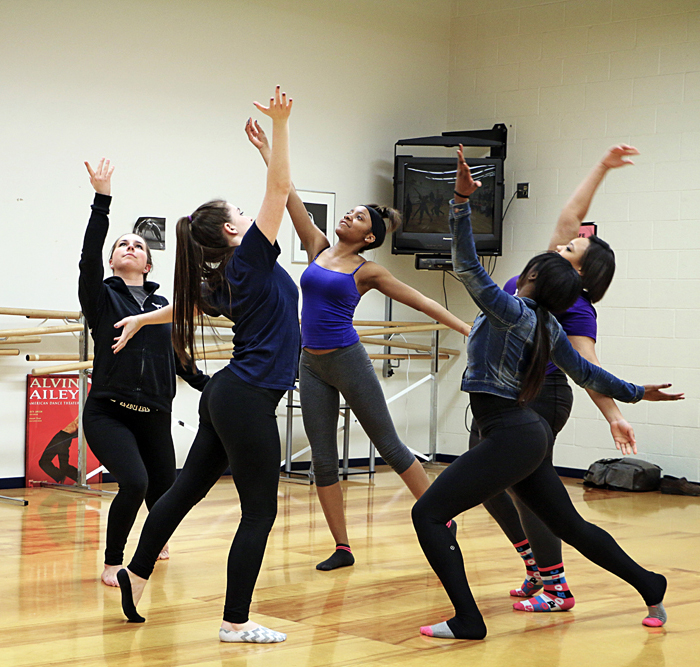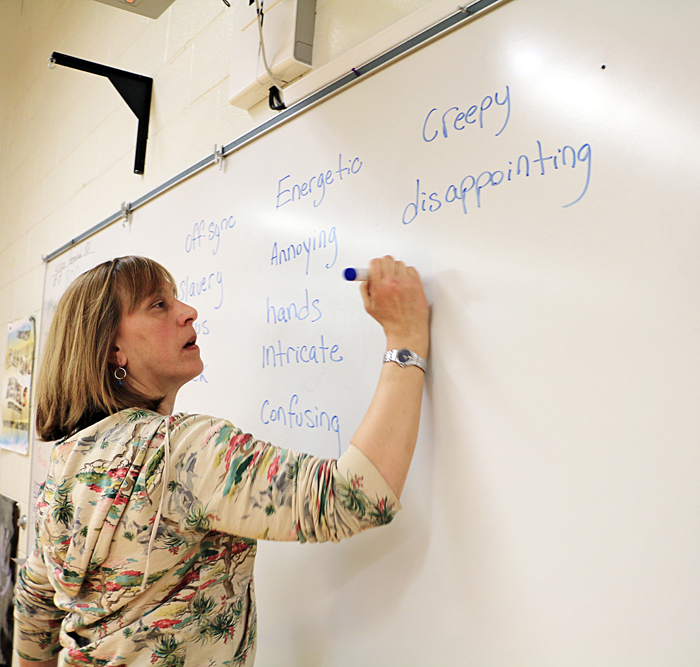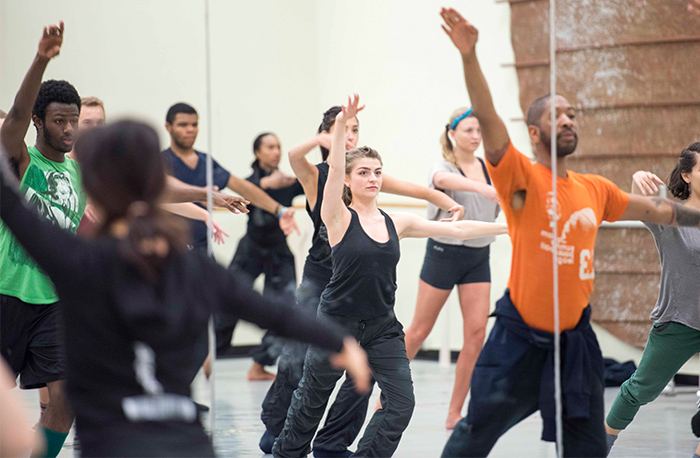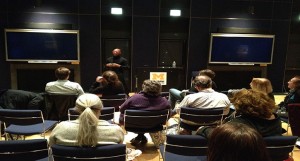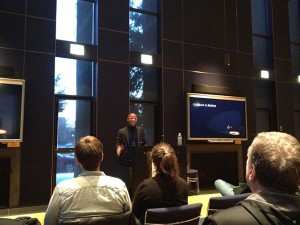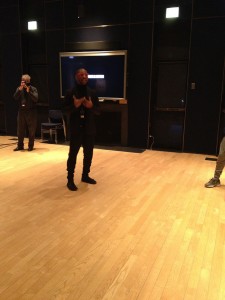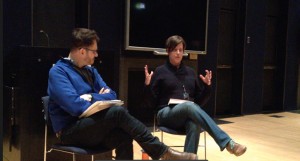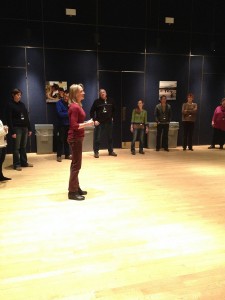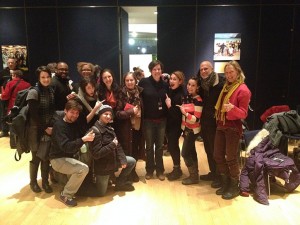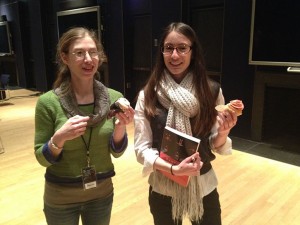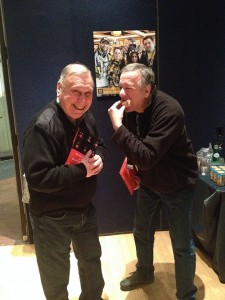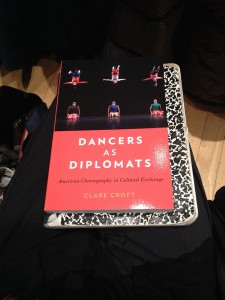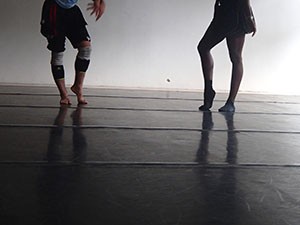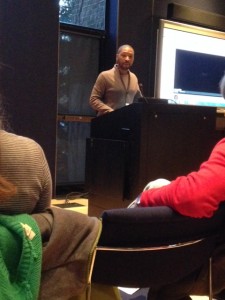UMS Connect: ‘Requiem’ feat. Kyle Abraham & Jlin
Welcome to UMS Connect, a new digital series that invites audiences to dive deeper into the season’s performances in casual conversations with artists and creators.
In this Episode
UMS will present Requiem: Fire in the Air of the Earth on January 7 & 8, 2022. Choreographer and MacArthur Fellow Kyle Abraham and pioneering producer, composer, and electronic music pioneer Jlin have come together to create this new work through a reimagining of Mozart’s Requiem in d minor.
Cayenne Harris, UMS’s Vice President of Education & Community Engagement, interviews Kyle Abraham and Jlin about Requiem and its conception, their creative processes, and what audiences can expect.
Inspired by the elements, mythology, and astrology, Requiem: Fire in the Air of the Earth incorporates Abraham’s fluid choreography from classical ballet, hip-hop, modern dance, and street dance repertoire. Jlin takes Mozart’s classic Requiem and turns it into an electronic dance piece, building her sound on a style of house dance and street dance that originated in Chicago in the 1990s.

‘Requiem: Fire in the Air of the Earth’
More About the Artists
Kyle Abraham
Recently featured in O, The Oprah Magazine, Kinfolk, and Vogue Italia, 2018 Princess Grace Statue Award recipient and Lincoln Center Education Artist in Residence, Kyle Abraham is a 2013 MacArthur Fellow and 2016 Doris Duke recipient who began his dance training at the Civic Light Opera Academy and the Creative and Performing Arts High School in Pittsburgh, Pennsylvania. He continued his dance studies in New York, receiving a BFA from SUNY Purchase and an MFA from NYU Tisch School of the Arts, an honorary Doctorate in Fine Arts from Washington Jefferson College, and is currently serving as a visiting professor in residence at UCLA. Mr. Abraham is the founding Artistic Director of A.I.M, an American contemporary dance company, created in honor of his history, experiences, and artistic interests.
Learn more at aimbykyleabraham.org
Jlin
In this NPR Morning Edition interview, Jlin shares her love of math, how global travels influenced her sound, and how the pandemic propelled a renewed love of her craft into her new EP album.
Explore Jlin’s critically acclaimed albums on Apple Music or Spotify, including Dark Energy (2015) and Black Origami (2017):
The Lost Art of Writing Love Letters
Observations from Kyle Abraham’s Residency work with Michigan LGBTQ Youth

Choreographer Kyle Abraham. Photo courtesy of the artist.
Never before have I found myself in a group of “strangers” whom I felt I actually knew quite well. We were sitting in a large circle in a white, bright room in the Affirmations center of Ferndale, Michigan, roughly 40 minutes out from Ann Arbor.
The group was richly diverse in age, style, perspective, and gender. Many in the group were young people from the Metro Detroit area who identify as LGBTQ. Others in the group were UMS staff and adult leaders and volunteers of the center. Regardless, after just a few days of experiencing workshops together under choreographer Kyle Abraham’s lead, participants were comfortable with sharing something they loved about the people sitting next to them. At the beginning of our first meeting earlier that week, we had shared only our names and preferred gender pronouns. In the time between, Kyle and some of his company members had created a transformative, interactive experience for their dance research and for the hearts of each participant.

Kyle’s New York-based contemporary dance company Abraham.In.Motion has a mission to “create an evocative interdisciplinary body of work.” To help deepen the development of Kyle’s newest work, which he currently calls Dearest Home, UMS hosted the choreographer and four of his company members for one week.
The artists spent nearly ten hours at Affirmations, where they shared the progress on their choreography, asked for feedback, led discussions on the core themes of the work, and even taught some movement to the group who had gathered to participate. As a former 21st Century Artist Intern with UMS, I was lucky enough to sit in,observe, and absorb. (My colleague Sophia Deery spent a whole summer with Kyle in the same program. You can read about her experience.)

To start, Kyle led an open conversation about healthy relationships, a vulnerable topic but a productive discussion. The group ultimately came to important conclusions, for example, happiness is an identifier of love, not a product of love, which led us into our next activity. Kyle directed us to a table full of magazines, color pencils and markers, envelopes, scissors, glue sticks, and more. He asked everyone to write a good old-fashioned love letter, a gesture he described as a lost art. He turned on a playlist and let all of us, including his company members, sit together and work on our small expressions of love. We wrote love letters to friends, romantic interests, and even ourselves. Some words that were thrown around in the reflective discussion that followed the activity were “insecurities, easy, hard, weird, nice.”
Kyle’s playlist continued filling the room as we transitioned into our next activity, which involved huge, white pieces of blank paper taped to the walls. Kyle asked us each to recall some of the words that were used in our first group discussion and to visualize them, as literally or as abstractly as we wished, on the wall. Within minutes, the walls were full of “blooming, touching, dream, cuddle, risk,” and more.
Kyle’s dancers then shared a trio of choreographed movement that they had worked on in the dance studio that week. More word associations were thrown out from the group in response to the choreography. Some of the group saw petals in the dance, others saw comfort and support, and others saw the healing powers of touch and love.

The next excerpt of choreography, this one a duet, got drastically different reviews. First danced for us in silence, this duet was associated with “anxiety, separation, unsettling.”
Kyle asked the dancers to execute the same choreography again, this time to music he had used while creating it. He explained to the group the significance and influence of this music on his choreography. He shared that he sometimes spent years working on a playlist for a dance piece before actually beginning his work on the movement, and the playlist doesn’t necessarily become that dance’s sound score, but may be used otherwise in the final product. For example, he had the playlist used to create the dance piece Radioshow as pre-show music at the theater, music that played as the audience filed in. The dancers felt that their silent run-through of the choreography made them more dependent on each other’s timing and left a lot of decisions to their creative imaginations. The run with music, alternatively, provided them with more context and drive. Some members of the group preferred the intimacy of the silent run-through, and others appreciated watching the influence of the music.
The discussion on music continued as Kyle asked us each to create our own Love Playlist for TODAY by gathering a collection of music that was relevant to our feelings in that exact place and time. I thought about all the channels of love I felt in that specific moment: love for family, friends, self, dance, people, romantic love. I began jotting down as many relevant songs as came to mind. We each shared highlights from our playlists with each other and bonded over mutual musical interests. I remember smiling and shaking my head in disbelief at the fact that just from hearing some song titles that came to mind when people thought about love, I could get a strong context for how they are doing and feeling in their personal lives.

Kyle then showed videos of his previous works, including Radioshow and Watershed, a piece that was presented recently through UMS. He explained that within his creative process, he has also used his playlists to improvise movement, and then his dancers learned choreography by studying videos of his improvisations.
He also teaches the dancers new phrases bit by bit, as he invents on the spot, and asks dancers to “catch what they can” throughout his improvisation. He showed us an example, as he improvised and then Penda, one of the dancers, created her own adaptation of that phrase. Suddenly, the company had a multiplication of movement material to work with and develop furthermore for the growing piece.

Another strategy that Kyle uses to generate movement in this piece is retrograding a phrase of choreography that already exists. This essentially looks like the same movement, just done backwards, as if on a rewind function. Additionally, Kyle uses action words like “dive, jump, snake, slide, and twerk” to direct his dancers in improvisational exercises to create new movement. He is also inspired by simple, human gestures; pedestrian movements that we all see every day like a nod of the head or a wave of the hand. The dancers showed examples of movement created from all of the above strategies. We even got to learn an excerpt of the gestural phrase and get up and try dancing across the room to some of Kyle’s action words.

Kyle later returned to the topic of our individual Love Playlists. He instructed the dancers to show us some choreography while each of us listened to a song from our personal playlists. Some participants were amazed at how musical the dancing was, even when the dancers themselves could not hear our individual songs that were playing through our personal earbuds and headphones.
This connection between the music and the dancing, both revolving around the theme of love, inspired us to create album covers for our playlists. I looked over my colorful album cover, my collage of words in my love letter, my playlist of happy and sad love songs, and I realized that my own experience with the themes that are fueling Kyle’s new work channeled through my own life in so many ways over the course of that week. The majority of the room had the same experience.

Kyle’s new piece seems to be a love letter in itself. It is full of vulnerability and honesty. It is inspired by the pieces of his personal life that are closest to him: his history, his home, his identity. It explores and celebrates just how human the art form of dance is. I felt validated as a dance artist because I could see the change in the participants of Kyle’s residency. Their closing remarks revolved around a majority opinion that they now saw dance as relatable, emotional, and human. This new work is sure to be a love letter to that sentiment.
Artist Internships for 21st Century
Follow U-M student Sophia Deery on her journey through our 21st century internship program.
Open to U-M School of Music, Theatre & Dance sophomore and junior students, the next session of this arts internship program will take place in the summer of 2016. Chosen through a competitive application process, each student fellow will intern for 5-7 weeks between May and August 2016 with a professional dance, theater, or music ensemble that UMS plans to present during the 2016-17 season.
Interested in more? See photos by this year’s student interns.
UMS K-12 Workshops
Students at Farmington High School created their own dances in a post-show workshop led by UMS Education Coordinator Terri Park. Learn more about how UMS engages the community and check out upcoming events you can attend here.
UMS Education Coordinator Terri Park taking notes on how students felt about the Abraham.In.Motion School Day Performance.
Students TalkOut After Abraham.In.Motion
After attending a school day dance performance by Abraham.In.Motion students talk out and share their thoughts! Did you attend a performance recently? Share your thoughts on UMS Lobby.
Abraham.In.Motion Residency
UMS Night School: Curious About Dance – Session 4 Recap
Editor’s note: This post is a part of a series of by U-M student and UMS intern Hillary Kooistra, who’s covering our free UMS Night School: Curious About Dance workshop series.
Anything You Do Will Be Perfect
Welcome back, Night Schoolers! I hope everyone enjoyed their time off! The sun has been shining all week and it was certainly shining in the Alumni Center on Monday night. We were joined by Kyle Abraham, Founder/Artistic Director of Abraham.In.Motion (AIM): the company that will grace the Power Center stage this coming Friday and Saturday. Also with us was Matthew Baker, AIM choreographic associate/dancer, graduate of Western Michigan University, and Ann Arbor native. These two incredible artists invited us into the world of Abraham.In.Motion by demonstrating and talking about the company’s work, as well as allowing us to embody a bit of their choreographic process. Kyle, a MacArthur Award recipient and fascinating thinker/speaker/mover, confirmed an idea we have returned to each Night School session: dance is a thoughtful, collaborative and process-driven art form.
Kyle kicked off our session by showing us video clips of some of his work: Live! The Realest MC, Pavement, and the two works that his company will perform on Friday and Saturday: The Watershed and When the Wolves Came In. As we watched these intersections between stunning movement and innovative stage design, Kyle described the thought, research and collaboration behind the dances. We were then able to make informed, conceptual observations about each work while enjoying some incredible aesthetics. No wonder this man won a genius grant!
Kyle Abraham talks about his process before showing us clips of some of his dances.
After giving us a chance to see and hear about his dances, Kyle introduced us to the way he works with his company and let us experience his choreographic process with our own bodies. He led us through a few creative activities he uses to establish movement and choreography in collaboration with his dancers. Kyle is not one to simply enter a rehearsal with set material for his company to learn and replicate; his process-driven approach to choreography pays careful attention to the potential contributions of each individual body and mind in the room.
Kyle explains some of the intentions behind his process to a curious Night School cohort.
With these ideas in mind, we plunged into some AIM-motivated movement invention and exploration. First, we learned and practiced a simple arm gesture phrase (from The Quiet Dance, another work in his company’s repertoire).We executed this upper body sequence as we learned it, while letting our legs do whatever they wanted. We also explored a way to compose our own phrases by responding to “Action Words.” As Kyle (and fellow Night School Student Fred) prompted us to slice, jump, slide, squish, wiggle, and dive, we travelled across the room with our own sequences of movements and rhythms.
Night School students experience Kyle’s choreographic process: creating our own leg movements to accompany a set of arm gestures and travelling across the room in response to Action Words.
Kyle explained that the movement he and his dancers generate out of such tasks often becomes the starting point for phrases in his repertory works. In a third exercise dubbed “Catch What You Can,” he and Matthew demonstrated how one seed idea can blossom into a longer, lasting sequence. Kyle grooved to some music while Matthew followed behind him, trying to grasp as much movement as he could. Then Kyle instructed Matthew with prompts such as “left arm and leg chug back,” and “figure eight to the right,” as well as names of moves that seemed to have a significance within the company, such as “Classic.” Regardless of the prompt’s origin, Matthew remained on the same page as Kyle the entire time, and breezed about the floor as he constructed his phrase. The result was amazing. From Kyle’s few moments of visual and verbal cues, Matthew danced an entire phrase of movement without stopping to think once: leaving us asking, “Did that just happen?”
Abraham.In.Motion dancer Matthew Baker develops a sequence of movement by “catching what he can” of Kyle’s visual and verbal cues
Once we picked our jaws off the ground and Matthew got a chance to catch his breath, we sat back down for a conversation with the two artists. Kyle provided generous answers to our questions about his company and process, sharing insights about the shifting roles of dancers and choreographers, the value of time in choreographic development and honesty in performance, and the approach to working with new bodies while creating work on others. I must be getting early onset nostalgia as we approach our final Night School next week, because I could not help but recall all the lessons we’ve learned this semester as I heard Kyle speak about his work. Remember the exercise we did with Martine a couple of weeks back, where we had to remember our partner’s gestures as they told us “something nobody knew”? I thought of that session throughout Kyle’s “Catch What You Can.” How Charles helped us alter gestures so they would fit the two-dimensionality required by labanotation? Very similar to how Kyle revealed he will develop a gesture until it has traces of its origin but breathes a new life.
If there’s one thing I think we’ve all learned through Night School this year, it’s that there are many, many entryways into making, viewing, and discussing dance. We’ve had the privilege of unfolding these multiple layers throughout the weeks: questioning why plastic bags float in the air, how people walk on walls, or where Kyle Abraham finds his musical inspiration. But more time for reflection next week. This week, we have a marathon of events related to Kyle’s residency to look forward to! Remember, Friday and Saturday will showcase two different programs, so why not buy two sets of tickets and camp out at the Power Center this weekend? You can even stay an extra night and be fed bagels on Sunday at the first ever UMS Brunch Download Conversation. Hope to see everyone this weekend, and at our LAST session/graduation next Monday night! In addition to thinking about the UMS dance season still to come, we will be celebrating with our Adventure Card raffle drawing, Perfect Attendance Awards, and of course, some food and drinks. So don’t miss out! No cap and gown necessary, just your presence and energy.
Upcoming Events:
Abraham.In.Motion Performances, Mar. 13-14, 8pm, Power Center (TICKET REQUIRED)
Related:
Mar. 13: Opening Night Q&A: Abraham.In.Motion, Power Center, post-performance (TICKET REQUIRED)
Mar. 14: You Can Dance: Abraham.In.Motion, Ann Arbor YMCA, 1:30-3pm (FREE – SIGN-UP REQUIRED, BEGINS AT 12:45PM, FIRST COME FIRST SERVE)
Mar. 14: Closing Night Q&A: Abraham.In.Motion, Power Center, post-performance (TICKET REQUIRED)
Mar. 15: Brunch Download with Kyle Abraham, U-M Alumni Center, 11am (FREE)
Session 4 Resources:
Kyle Abraham/Abraham.In.Motion, Live! The Realest MC Promotional Video
Kyle Abraham/Abraham.In.Motion, Pavement Promotional Video
Kyle Abraham/Abraham.In.Motion, The Gettin’ Promotional Video
UMS Night School: Curious About Dance – Session 3 Recap
Editor’s note: This post is a part of a series of by U-M student and UMS intern Hillary Kooistra, who’s covering our free UMS Night School: Curious About Dance workshop series.
Presenting: The Trisha Brownie Dance Company
After a whirlwind week of dance, we had plenty to discuss during our latest Night School session. We had two special treats on Monday evening: the first was the opportunity to hear Clare Croft, our trusty Night School leader, speak with Jim Leija, UMS Director of Education & Community Engagement, about her new book, Dancers as Diplomats: American Choreography in Cultural Exchange. The second treat, of course, came in the form of cupcakes, which we enjoyed after the discussion. Before we crossed overseas to learn about dance’s contribution to cultural diplomacy, we focused on some exciting moments in American dance, with a reflection on last week’s performances of Confetti Sunrise and the Trisha Brown Dance Company.
Professor Amy Chavasse invites us into the world of Trisha Brown
We were joined on Monday evening by U-M Associate Professor of Dance Amy Chavasse, who guided us through some physicality unique to Trisha Brown. Trisha emphasized the idea of “pure movement” in her work: movement based on mechanical body actions such as bending, straightening, or rotating: stripped of any metaphor or connotation. Trisha built on this essential, pure movement to create the much of the porous, fluid, and surprising choreography we saw this weekend. Amy helped us understand these sensations by inviting us to create and erase edges; set up expectations only to veer in a different direction; and produce gestures that hold specific meaning to us, but appear abstract to the outside eye.
Exploring Trisha Brown’s notion of “pure movement”
I think it is safe to say that after this movement workshop, we are all ready to fly to New York and dance for Trisha Brown. Alas, we had to save our debut as the Trisha Brownie Dance Company (thank you, Charles, for coining the name!) for another day, because there was too much to talk about here in Ann Arbor! We began a rich conversation about this weekend’s performance, acknowledging the elements we saw on the program (costumes, lights, set pieces) as entry points into the dances’ worlds. We also made a nice connection between Trisha Brown, Confetti Sunrise, and the workshop that Anna Martine Whitehead led for us during our last Night School session: thinking about gesture as a mechanism for developing movement and meaning. As we discussed the moments of delight, curiosity, and even discomfort we found in all of the works we watched over the week, we asked ourselves: What are we supposed to care about when watching dance? What do we bring to each performance that may influence our interpretations? How does time collapse and expand as we view performance that holds its own chronology in dance history, as well as in our own experiences?
Clare and Jim discuss Dancers as Diplomats: American Choreography in Cultural Exchange
Each week, I am excited by the ways our interpretations of specific performance works lead to larger discussions about what it means to view and discuss dance. Though we usually approach this broader conversation through performance analysis, this week we were lucky enough to explore ideas behind dance scholarship through Clare’s research on diplomacy in American dance. Her book, which you can buy from UMS for only $20 (excuse my shameless plug!), chronicles dancers’ perspectives of government-sponsored international tours by American dance companies during the early decades of the Cold War and twenty-first century. During the last half of Night School, Clare and Jim sat down to talk about Dancers as Diplomats, divulge some details behind the stories in the book, and answer our questions about the topic.
U-M Department of Dance faculty and students smile with Clare after a conversation about Dancers as Diplomats
Night School students Rebecca and Sam (photo on left) and Ed and Harvey posing with cupcakes and newly purchased copies of Clare’s book!
We have the perfect opportunity to crack this book open, as next week we are off for mid-winter (I just can’t bring myself to say spring) break. I’ll be in Las Vegas, and I have to say I’m more excited about my Cirque du Soleil tickets than I am about the casinos. I guess you can take the girl out of Night School but…
Whether you are travelling or staying in Michigan, I hope you find well-deserved downtime, and perhaps some opportunities to watch, discuss, or even practice dance! We return to the Alumni Center on Monday, March 9th and will be joined by the fantastic Kyle Abraham, whose company Abraham.In.Motion performs at the Power Center that weekend. As a hot, rising choreographer in today’s contemporary dance field, Kyle’s work will provide us with a new lens through which we view performance; it will be a real treat (unfortunately this time without the cupcakes) to have him with us for a session. See you all in two weeks!
Can’t wait to read my copy of Dancers as Diplomats!
Upcoming Events:
Hou Ying and Peng Zheng Dance Performance, Feb. 24, 7pm, U-M Keene Theater (FREE)
Session 3 Resources and Readings:
Kyle Abraham’s Childhood Road Trips
Listen to a funny outtake of Kyle talking about childhood road trips to Detroit & Jerry Curls. Check out his upcoming performances on March 13th and 14th: http://bit.ly/1iinyG7
Student Spotlight: Keeping Up with Kyle Abraham
Editor’s note: During the summer of 2014, UMS launched a new 21st Century Artist Internships program. Four students interned for a minimum of five weeks with a dance, theater, or music ensemble that is part of our 2014-2015 season. Sophia Deery is one of these students. She spent the summer in New York with Kyle Abraham and his company Abraham.In.Motion and recounts her experiences below. Abraham.In.Motion brings their innovative choreography to UMS on March 13-14.
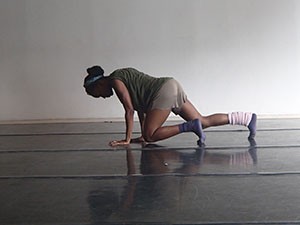
Tamisha Guy rehearses “When The Wolves Came In,” which partially draws inspiration from a tragic accident involving wild African dogs at the Pittsburgh Zoo in 2012.
“Sister Sophia!” Sister Sophia – that’s me. “Sister Sophia, could you come here and film this run?” That’s Kyle Abraham, founder, choreographer, and dancer of Abraham.In.Motion, the NYC based-dance company which emerged on the scene in 2006, and became one of the hottest tickets in the city this season with its critically acclaimed two-night program at New York Live Arts in September. I was able to intern with Kyle and the company from July through August of this past summer under the auspices of the newly created 21st Century Artist Internship through the University of Michigan’s University Musical Society. This was a fascinating time to be with the company, not only because it immediately preceded their NYC premiere of The Watershed, and When the Wolves Came In, and would involve helping to plan a major European tour, but because it was – and still is – a time when the company itself was undergoing a major internal transformation.
I came to AIM as they were nearing the end of their two-year residency at New York Live Arts. The residency is a valuable one. It allots a space and funding for a given artist to develop and perform new works in a beautiful building in Chelsea which houses a full theater, offices, and several state of the art studios. For those not familiar with New York Live Arts, it is a non-profit organization that was the result of a 2011 merger between the renowned Bill T. Jones/Arnie Zane Dance Company and Dance Theatre Workshop. In addition to this residency, Kyle had received a MacArthur “Genius” fellowship in 2013, and the company was changing shape from a pick-up model where dancers would work on a project-by-project basis, to a resident company. The difficulty is if you want dancers to make your company their priority, you have to enable them to support themselves. I had the invaluable opportunity to sit in on many meetings about budgets, the hiring of new dancers and staff members, ideas for social media campaigns, and the scheduling of performances that seemed incredibly far into the future. My own administrative tasks included writing up and sharing weekly rehearsal schedules and booking locations for the rehearsals at various dance spaces all over the city… all the while staying in budget. What I witnessed on the administrative side of the internship was, in essence, the growing pains and excitements of a small dance company, moving up to take its place as a major player in the dance landscape.
“I hope it’s good.” Kyle says to me, stretching out across the marley floor, sock-feet splayed, eating the chicken salad I had picked up for him. Rookie-intern that I am, I had made the mistake of forgetting a fork, necessitating a second trip down 6 floors and across the street, back to the deli where the cashier already thought I was crazy for spending 15 minutes trying to decide if I should get regular chicken salad, because they didn’t have the curried kind he had asked for. (The regular was fine, it turned out). I have learned a lot of things about Kyle from working as his intern. He is a very picky eater, enjoys Auntie Anne’s pretzels (original salted) and lemonade, and hates cheese. “I hope it’s good” was not referring to the chicken salad, however, but to the two programs he was rehearsing that day for their upcoming premiere. His openness and self-deprecation leave me wondering if he really cannot see the power of the piece that has left me breathless even after the tenth run. I have learned that it can be hard directing a company of dancers, now no longer all people with whom you graduated from college, but a new, younger group who look to you as a leader. He navigates a fine line between knowing when to adhere to divisions of authority structure that divide dancer and choreographer or artistic director, and when relaxing these divisions and goofing around is essential to group cohesion. I have learned that Kyle likes to send emails ending in a inscrutable “…” which leaves the recipient slightly panicked, wondering exactly what that last implied piece of information was…
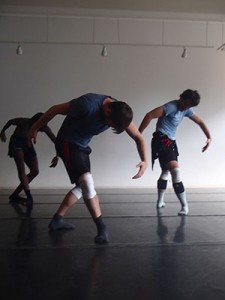
Long-time company member, and newly appointed company liaison Matthew Baker (an Ann Arbor native!) leads auditioning dancers through choreography.
“Sister Penda!” Kyle calls in a laid-back drawl, as dancer Penda N’diaye makes her way over. Kyle’s speech alternates between a familiar, affectionate, urban drawl tinged with the occasional “y’all,” which he uses with his dancers, and rapid, academic articulation when he talks about his ideas, inspirations, and influences. These are many, and indicate a cultural and artistic literacy that is wide as it is deep. Born and raised in Pittsburgh and immersed in urban youth street culture, educated at SUNY Purchase where he studied classical and modern dance, then to NYU where he received an M.F.A., a former classical cellist and briefly an employee at the Andy Warhol museum, Kyle’s education, much like his choreography, follows no conventional pattern. Additionally, he is a black, homosexual man, at a time in our country’s history where we are still deciding exactly what it means to be both. It is no doubt because of this unconventional path that Kyle’s choreography incorporates such a variety of styles (ballet, hip hop, contemporary, Graham, etc.), subject matter (Emancipation Proclamation, identity, modern sexuality, apartheid, protest), music (Max Roach, Robert Glasper, Drake, Italian Opera) – and despite the incredible breadth of its spectrum, it always rings true. Every piece comes off like a first person account of a real life experience. Like his speech, they are unaffected, but very effective.
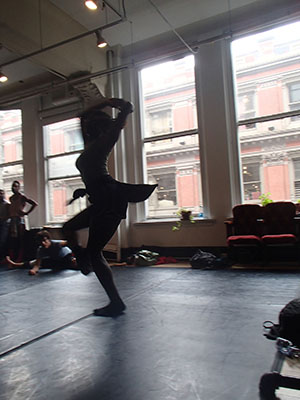
New A.I.M. dancer, statuesque Penda N’diaye, practices on the side during a rehearsal at Gina Gibney Studios.
Kyle expects this same malleability and authenticity from his dancers. His auditions, which I was fortunate enough to witness rather than experience, are a grueling process. When I asked Kyle what he looks for in a dancer, hoping honestly to get some inside-scoop for when I’m back in New York, he said that he looks for someone with dance ability and/or training across several techniques like Graham, Limon, classical ballet, Horton, hip hop, etc. As he ticked off historic dance makers and various techniques, I thought of how broad a dancer’s education has to be nowadays in order to remain competitive and successful in the field. They have to take direction which morphs technical terms like “a la second leap and then lateral T” immediately followed by “hood rat, booty poppin’, gum chewing” into “soldier walks.” This is not a one-trick pony company; indeed fewer and fewer are. Ballet company seasons are increasingly including works by Paul Taylor and Twyla Tharp, making dancers’ versatility vie with their perfect 32-count fouettés among their most marketable skills. Our conversation made me wonder what type of education provides this – how does the modern professional dancer train? I spoke with the company dancers about their various backgrounds and training, and found that many of them had pursued degrees in dance following high school, while others had immediately begun professional careers. Varying backgrounds aside, the common denominator for all of Kyle’s dancers is their intellect. The versatility he demands extends beyond the physical. As evidenced by the myriad sources from which he draws his inspiration, this is a company in which intelligence, and an understanding of the concept of each piece is essential to being able to perform it with integrity.
Two men lunge and shoot their arms up in a high V, fingers in a gesture suggestive of an old time cowboy at a gun show, or perhaps a gang member throwing up his allegiance, but the hands don’t stop there and move immediately into a high fifth position which then travels down the body to first position while their torsos synchronize in a liquid body roll. In my favorite piece, a trio called Hallowed, gospel music fills your ears as you watch three dancers alternate between a slow strut, lazily waving their arms with deadened eyes – and the rapid, aggressive arm gestures of a dance-off, eyes alive with anger or indignation. The first conjures images of paper fans, of hard church benches, of heat, and perhaps a more sinister oppression. The contrast between the two styles of movement seems to me a dramatization of the tension existent between resignation and protest.
These few examples show some of what makes Kyle Abraham unique as a choreographer: there is a story – told in recognizable pedestrian movements which are generic only in the sense that they are universal and recall things the audience has experienced, wished, or feared. Sketched situations of human existence, they allow us to do some coloring in. Seamless transitions from the pedestrian, to modern dance vocabulary, to hip hop and social dance, give the impression that Kyle is not so much juxtaposing contrasting styles of movement, or worlds for that matter, but rather elegantly weaving them together in a new type of concert dance. This is not schoolyard hip hop, nor a purist’s classical dance. While it incorporates elements of both, it also has roots in the real, the commonplace, the grit and injustice, problems we have faced in the past, and those we are grappling with now, and yet simultaneously it transcends them. At once personal and universal, and never more timely, the pair of The Watershed and When the Wolves Came In is like a diary entry written in the curves of spines, the bends of elbows and shifting patterns of light.
To view more of Sophia’s photography, see the gallery below.
UMS Night School: Bodies in Motion – Session 8 Recap
Editor’s note: This post is a part of a series of by U-M student Sarah Squillante, who’s covering our free UMS Night School: Bodies in Motion series. Learn along side with them.
UMS Night School’s 8th session welcomed the largest crowd yet. That’s not too surprising, given the notoriety and accolades of its special guest: award-winning choreographer and dancer Kyle Abraham, winner of the prestigious MacArthur Fellowship and numerous other awards. His work – a dynamic fusion of hip-hop and modern – is often laden with questions of gender, race, poverty, and politics. He is working on creating new works for his company, Abraham.In.Motion, in addition to previous works like Pavement and The Radio Show (excerpts below).
We’re excited to announce that Abraham’s company will be making its UMS debut during our 2014-2015 season (we’ll reveal the details when we launch our 2014-2015 season on April 13, 2014). After quick introductions, the entire session was dedicated to a talk and short discussion detailing Abraham’s personal dance history, influences, and recent works.
Check out some of Abraham’s previous work in the following videos, which were shown during his talk:
U-M Dance Sophomore Elizabeth Benedict (on left in photos below) was encouraged by a professor to attend on Monday night. “I liked the talk because I saw a lot of how I move in his movements [in the videos]. I was inspired because I haven’t been dancing since I was three, and he hasn’t been dancing since he was three either. It was really validating,” she said. “He was really humble about everything.”
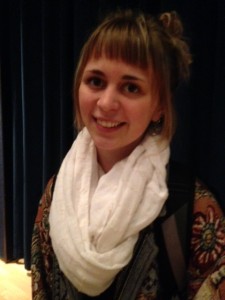
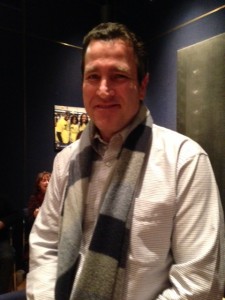
Abraham also attracted those less familiar with modern dance. “I didn’t grow up understanding dance, really,” said second-time attendee and ballroom dancer, Tom (above, on right). “I do a lot of social ballroom dancing, but I come from a music family with lots of visual art and music exposure – never dance.”
Night School is coming to a close! Join us for a recap of the semester and graduation next week, March 31, in the U-M Alumni Center at 7 PM.
Share questions, comments, or suggestions in the comments below.


